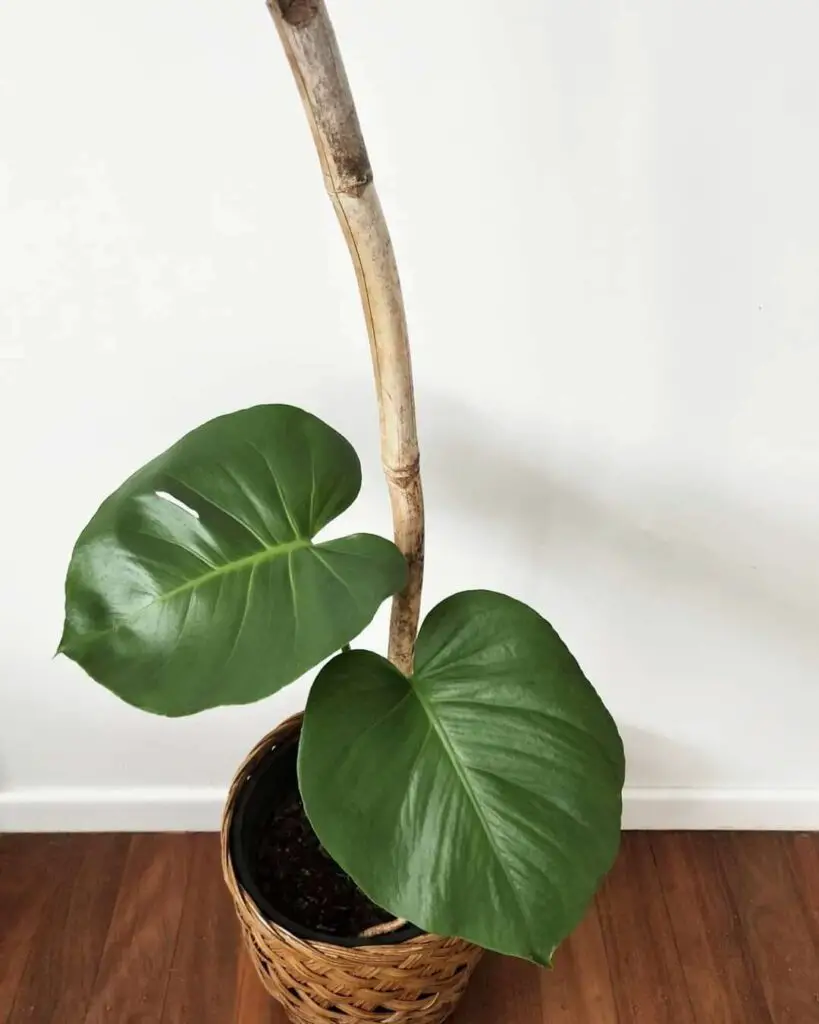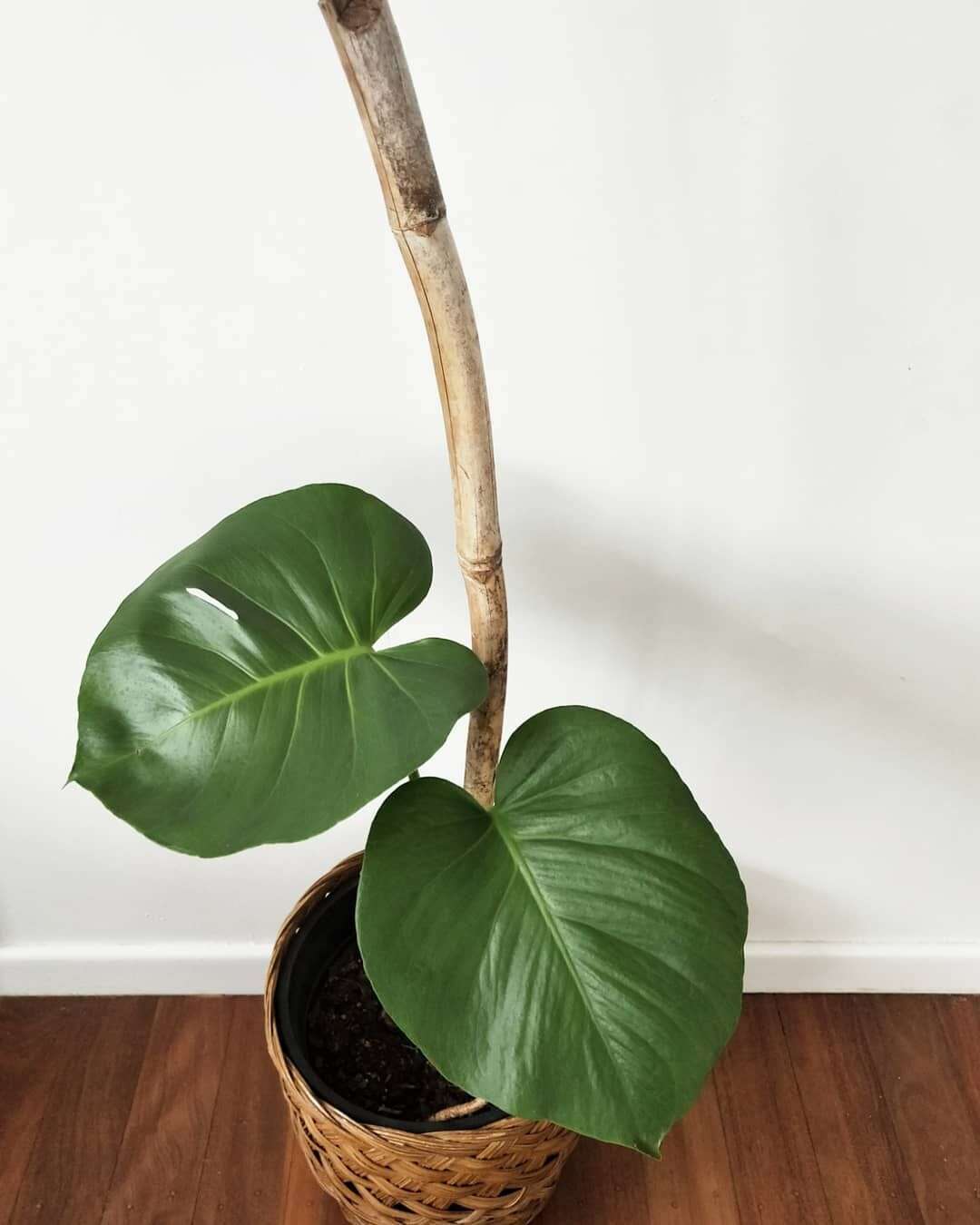If you’re a Monstera lover, you might have wondered: Do you need a moss pole for Monstera? This popular tropical plant is known for its large, glossy leaves and climbing habit. A moss pole offers a support structure that mimics the Monstera’s natural environment, helping it grow upward and develop those iconic leaf holes.
Using a moss pole can improve your Monstera’s health by encouraging aerial root attachment and proper growth. It also enhances the plant’s appearance by keeping it tidy and upright. Whether you are a beginner or experienced plant parent, understanding the benefits of a moss pole is essential for thriving Monstera care.

Understanding Monstera’s Growth Habits and Support Needs
Climbing Nature of Monstera
Monstera plants are natural climbers, native to tropical rainforests where they grow by attaching to trees. Their aerial roots seek support as they climb toward light, helping the plant stabilize and absorb moisture and nutrients from the air. Without proper support, Monsteras tend to sprawl outward, which can lead to weaker stems and less healthy growth.
Why Support is Essential
Providing support replicates the Monstera’s natural environment. A moss pole offers a vertical structure that encourages the plant to grow upward rather than spreading horizontally. This upward growth:
- Promotes larger, healthier leaves with the signature fenestrations (leaf holes).
- Improves air circulation around the plant, reducing risks of disease.
- Prevents damage caused by heavy leaves pulling on unsupported stems.
Aerial Roots and Attachment
Monstera’s aerial roots play a crucial role in attaching the plant to its support. These roots:
- Absorb moisture directly from the air.
- Help anchor the plant for stability.
- Enhance nutrient absorption when attached to moss poles or similar materials.
By providing a moss pole, you give the plant a surface that retains moisture, encouraging aerial roots to cling firmly, leading to more vigorous growth and a fuller appearance.
The Benefits of Using a Moss Pole for Monstera
Encourages Natural Climbing Behavior
Using a moss pole taps into Monstera’s innate climbing instincts. The pole mimics tree trunks found in its native habitat, encouraging the plant to grow vertically. This natural climbing behavior leads to larger, healthier leaves with more fenestrations, which are the signature splits and holes Monsteras are prized for. Vertical growth also helps the plant maximize exposure to light, which is essential for robust development.
Improves Plant Stability and Health
Moss poles provide much-needed support, especially as Monsteras mature and their leaves grow heavier. Without support, stems can bend or break under the plant’s weight. A moss pole:
- Anchors the plant firmly.
- Reduces the risk of stem damage.
- Enhances overall plant posture.
Additionally, moss poles retain moisture, which benefits the aerial roots by creating a humid microenvironment, aiding nutrient absorption and hydration.
Enhances Aesthetic Appeal and Space Efficiency
Besides health benefits, moss poles make Monsteras look tidy and attractive by keeping growth compact and vertical. This helps save space in homes or offices. Rather than sprawling across surfaces, the Monstera becomes a striking, upright focal point, ideal for interior décor enthusiasts seeking a lush, tropical vibe.
How to Provide Support to Monstera with a Moss Pole
Choosing the Right Moss Pole
Select a moss pole that suits your Monstera’s size and growth stage. Poles typically come in sizes ranging from 12 to 60 inches. For young plants, a 12-24 inch pole is sufficient, while mature Monsteras benefit from taller poles for continued upward growth. Look for poles made from natural sphagnum moss, as it retains moisture well and encourages root attachment.
Installing the Moss Pole Properly
Place the moss pole firmly into the plant’s potting soil near the main stem, ensuring it is stable and upright. Gently guide your Monstera’s vines or stems toward the pole, securing them with soft plant ties, velcro strips, or biodegradable twine. Avoid tying too tightly to prevent damaging the stems. As the plant grows, gradually encourage new aerial roots to wrap around and cling to the moss.
Maintaining the Moss Pole for Optimal Support
Keep the moss pole moist by regularly misting it or soaking it briefly in water before reinserting it into the soil. This moisture encourages aerial roots to attach and absorb nutrients. Periodically check ties to ensure they’re not constricting growth and adjust as needed. Replacing or refreshing the moss pole every 1-2 years helps maintain its effectiveness in supporting healthy Monstera growth.
Light Requirements and Monstera’s Growth Support
Optimal Light Conditions for Monsteras
Monsteras thrive in bright, indirect light, similar to the dappled sunlight they receive in their natural rainforest habitat. Direct sunlight can scorch their leaves, causing brown spots or fading, while too little light results in slow growth and smaller leaves with fewer fenestrations. Providing adequate light supports vigorous climbing and helps the plant make the most of its moss pole support.
How Light Affects Climbing and Support Needs
When Monsteras receive sufficient light, they naturally grow upward toward the source, utilizing the moss pole for stability. In low light, however, plants may stretch or lean, weakening stems and aerial root development. This causes the Monstera to sprawl and lose its characteristic structure, reducing the effectiveness of the moss pole.
Tips for Balancing Light and Support
- Place your Monstera near east or north-facing windows to provide bright, indirect sunlight.
- Use sheer curtains to filter harsh rays in south or west-facing rooms.
- Rotate the plant regularly to encourage even growth on all sides.
- Supplement with grow lights if natural light is limited, especially during shorter winter days.
Maintaining proper light levels ensures your Monstera climbs healthily and attaches well to its moss pole, resulting in a fuller, more vibrant plant.
Watering Tips for Monstera with or without a Moss Pole
Watering Basics for Monstera
Monsteras prefer consistently moist but well-draining soil. Overwatering can lead to root rot, while underwatering causes leaf browning and wilting. Whether using a moss pole or not, maintaining the right moisture balance is key. Water your Monstera when the top 1-2 inches of soil feel dry to the touch, typically every 1-2 weeks depending on indoor humidity and temperature.
Impact of Moss Poles on Watering
Moss poles help retain moisture around aerial roots, creating a humid microenvironment. To support this, mist the moss pole regularly, especially in dry indoor conditions. This added humidity benefits aerial roots, encouraging them to attach and absorb moisture effectively. However, avoid soaking the pole excessively to prevent mold growth or waterlogging the soil.
Watering Tips Without a Moss Pole
If you don’t use a moss pole, focus on watering the soil evenly and ensuring proper drainage. Monsteras may develop fewer aerial roots without moss pole support, so humidity becomes more critical. Consider using a humidifier or placing a pebble tray with water near the plant to maintain humidity levels, especially in dry climates or during winter months.
Balanced watering supports healthy growth, whether your Monstera climbs a moss pole or grows more freely.
The Importance of Soil and Potting Needs for Monstera
Choosing the Right Soil Mix
Monsteras require well-draining soil to prevent waterlogging, which can cause root rot. An ideal potting mix combines:
- Peat moss or coco coir for moisture retention
- Perlite or orchid bark for aeration
- Compost or organic matter for nutrients
This balance allows roots to breathe while holding enough moisture for healthy growth, essential whether your Monstera is supported by a moss pole or not.
Pot Size and Drainage Considerations
Selecting an appropriately sized pot is crucial. Monsteras prefer slightly snug pots that encourage root development without overcrowding. Choose pots with drainage holes to prevent excess water buildup. Repotting every 1-2 years helps refresh soil nutrients and provides room for growth, especially as the plant climbs and requires a stable base.
How Soil Supports Moss Pole Effectiveness
Good soil structure enhances the stability of a moss pole by firmly anchoring it. Nutrient-rich soil promotes strong root systems, which work in tandem with aerial roots gripping the moss pole. Healthy roots absorb water and nutrients efficiently, supporting vigorous climbing and overall plant vitality.
Dealing with Pests and Issues While Using a Moss Pole
Common Pests on Monstera and Moss Poles
Using a moss pole can sometimes create a humid microenvironment that attracts pests such as spider mites, mealybugs, and fungus gnats. Spider mites thrive in dry conditions but can also settle near aerial roots; mealybugs often hide in leaf joints or on moss poles; and fungus gnats develop in overly moist soil or moss. Regular inspection of both the plant and moss pole is vital to catch infestations early.
Preventative Measures and Treatment Options
To prevent pest issues:
- Keep the moss pole moist but not soggy.
- Maintain good air circulation around the plant.
- Clean leaves regularly with a damp cloth or mild insecticidal soap.
If pests appear:
- Use neem oil or insecticidal soap sprays targeting both the plant and moss pole.
- Isolate infested plants to prevent spread.
- Replace moss poles if they become heavily infested or moldy.
Managing Mold and Fungal Growth
Moss poles’ moisture retention can also encourage mold or fungal growth. Prevent this by:
- Avoiding overwatering.
- Ensuring the moss pole dries out occasionally.
- Placing the plant in an area with moderate humidity and airflow.
Proper care keeps your Monstera and its moss pole healthy, minimizing pest and fungal problems while promoting strong growth.
Integrating Monstera with a Moss Pole into Your Home Décor
Creating a Tropical Focal Point
A Monstera climbing a moss pole makes a stunning centerpiece in any room. Its lush, perforated leaves add vibrant greenery and texture, evoking a tropical rainforest vibe. Place it near windows with filtered light to highlight its natural beauty while protecting it from harsh sun. The vertical growth supported by the moss pole helps keep the plant neat and eye-catching, ideal for living rooms, offices, or bedrooms.
Styling Tips for Various Spaces
- Modern Minimalist: Use a sleek, neutral-toned pot to contrast with the rich green foliage, creating a clean yet lively look.
- Bohemian: Pair the Monstera with woven baskets, macramé hangers, and natural wood elements to enhance the earthy, relaxed atmosphere.
- Urban Jungle: Combine with other climbing or trailing plants on moss poles or trellises for a layered, jungle-inspired display.
Practical Considerations for Home Placement
Ensure your Monstera’s location balances aesthetics and plant health. Avoid drafts and direct sunlight while allowing enough space for the plant to grow upward. Using a moss pole saves floor space by encouraging vertical growth, making it perfect for smaller rooms or apartments. The moss pole also helps maintain the Monstera’s shape, contributing to an organized, stylish environment.
Final Thoughts
Using a moss pole for your Monstera supports its natural climbing habit, promoting healthier growth and stunning foliage. It enhances stability, encourages aerial root development, and helps save space while elevating your home décor. Proper care—including light, watering, and pest management—ensures your Monstera thrives with or without a moss pole. Ultimately, investing in a moss pole brings out the best in this tropical beauty, making it a rewarding addition to any plant collection.

I’m Shofi, a passionate gardener and blogger. I have 10+ years of experience in gardening and hold certifications in horticulture and garden design. I share my knowledge and skills through my garden blog to inspire and educate others on the joys of gardening. I try to provide valuable information and create a community for gardeners of all levels to connect and learn. My ultimate goal is to inspire others to start their own gardens and connect with nature.

